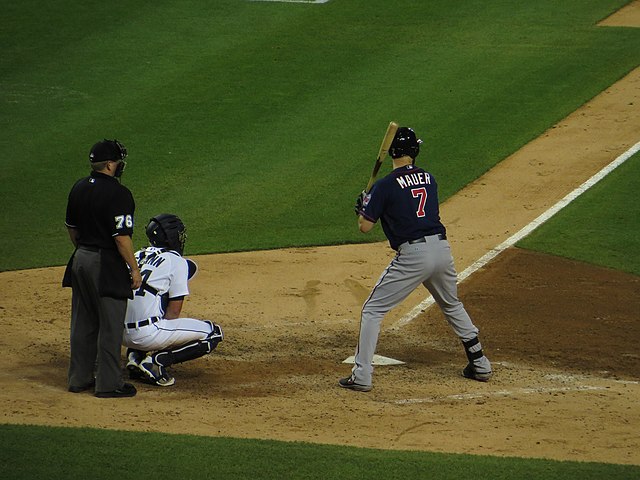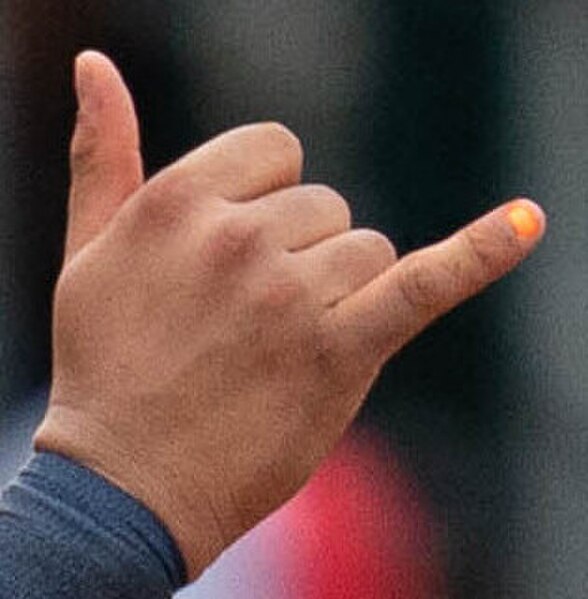In baseball, sign stealing is the act of observing the signs being signaled by the opposing catcher to the pitcher or a coach, and the subsequent relaying of those signals to members of one's own team. Signs are stolen with the intent of gaining advance knowledge of the upcoming pitch and communicating it to the batter, thereby giving them an advantage. Legal sign stealing typically involves the signs being observed by a runner on second base and then relayed to the batter through some sort of gesture. Illegal sign stealing involves mechanical or electronic technology; the rules regarding this have become more stringent over time and continue to evolve.
Catcher James McCann (in white uniform) of the Detroit Tigers using his right hand (obscured) to give signs to his pitcher, in a 2015 game against the Minnesota Twins.
Catcher Malachi Kittridge of the Boston Beaneaters demonstrating how he gives signs, circa 1903.
Joe Nossek, who served as an MLB coach for 28 seasons, was considered a "sign-stealing guru".
Catcher is a position in baseball and softball. When a batter takes their turn to hit, the catcher crouches behind home plate, in front of the (home) umpire, and receives the ball from the pitcher. In addition to this primary duty, the catcher is also called upon to master many other skills in order to field the position well. The role of the catcher is similar to that of the wicket-keeper in cricket.
Kansas City Royals catcher and 5× Gold Glove winner Salvador Pérez stands behind home plate during a 2013 game versus the New York Mets.
Uni-President Lions catcher Kao Chih-kang preparing for a game
Ali Sánchez's orange-painted fingernail during a 2022 game for the Toledo Mud Hens
Catcher Matt Wieters blocks runner Derek Jeter from tagging home plate.







